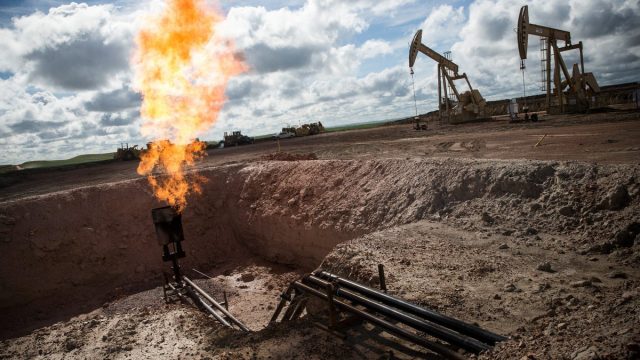Big Reductions In North Dakota Flaring Are On The Way

Per the press release below, Governor Jack Dalrymple’s office announced that ONEOK Partners would be building a new gas processing plant in McKenzie County (Watford City) capable of processing 200 million cubic feet of natural gas per day.
On top of that, they’re going to expand their existing gas processing capacity by another 100 million cubic feet per day.
To put that into perspective, check out this chart showing the percentage of gas flared in North Dakota over the last year (through May of this year, the last month for which numbers are available):

We saw a big spike in flaring over the winter, and that was because the Hess gas processing plant in Tioga went offline for upgrades. Before the upgrades, that plant was processing 100 million cubic feet of gas per day. As you can see on the chart, when it went offline it had a big impact on flaring.
As of May (the last month represented on the chart above) that plant was back to 120 million cubic feet per day, and should be processing 250 million cubic feet per day right now, and could go as high as 300 million cubic feet per day.
So, in the coming reports from the Department of Mineral Resources, we should see a pretty dramatic decline in the amount of gas flared thanks to the Hess plant expansion. The ONEOK Partners plant, plus the company’s planed expansion of existing plants, will be like adding a second Hess plant to the Bakken region.
Which means another big reduction in flaring.
Which, in turn, means the much-talked-about flaring issue is going to quickly become a much smaller issue. No doubt to the chagrin of those hoping to use flaring as a political weapon.
The state has actually been making steady progress on capturing gas for years now. It gets lost in the debate – mostly because the political and environmental interests who complain the loudest about flaring have little incentive to acknowledge it – but the amount of gas captured in the state has actually increased by 255 percent since July of 2010 (in this graphic, again, you can see the impact of the Tioga gas plant going down for expansion):

The problem is the amount of gas produced has increased at a slightly more rapid pace of 268 percent. That’s why the state’s flaring percentage has increased. Not because the oil industry has done nothing in terms of capturing gas – they’ve done a great deal, as you can see – but what they’ve done hasn’t quite kept pace with gas production.
The new ONEOK plant is expected to be operational in 2016. North Dakota has a goal of getting gas capture up to 90 percent within the next six years.




